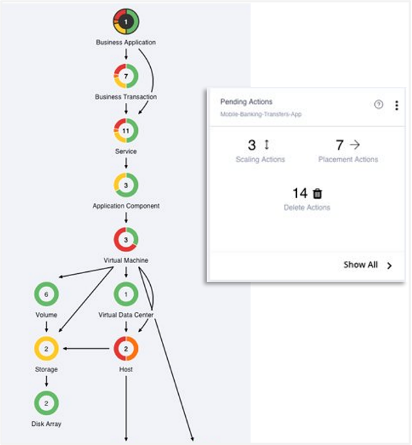This is the first blog in a three-part series on application resource management. Join us the next couple of weeks as we continue the series with “Application Resource Management 101: What it is and how to get started” and “What to look for in an application resource management solution.”
According to The App Attention Index 2021, “85% of people say applications and digital services have become a critical part of how they go about their lives.” This has been spurred on by the global COVID pandemic, as it forced organizations to become digitally resilient virtually overnight. What’s more, “76% of consumers claim their expectations of digital services have increased,”1 and 72% believe “it’s the responsibility of the brand to ensure that the digital service or application works flawlessly.”2 To top it off, more than 50% of consumers say brands “have one shot at impressing them and, if the experience is subpar, they won’t use them again.” 2
Given the reliance on, and expectations of, digital experiences and the applications at the heart of those experiences, it’s essential for IT departments to shift from operating in a reactive mode and get in front of application performance to ensure continuously reliable digital experiences. One way is through application resource management, giving applications the resources they need when and where they’re needed to deliver smooth, uninterrupted experiences.
The problem: Things break
The role of IT is to provide resources to support always-on applications for the best digital experience. Yet rather than focus on ensuring application resources, IT teams often spend valuable time reacting when things break.
Think about your own organization. What happens when applications are slow, or if they’re down or offline? You spring into firefighting mode. Outages can cost the business thousands of dollars per minute3 and up to $1 million per hour,4 so your best staff drop what they’re doing to get the app back online. Firefighting is so ingrained in how you work that some staff may even believe it’s how they add value.
The root cause: Complexity beyond human scale
A main reason IT is reactive is that the number of endpoints and inputs across on-premises, cloud, and edge environments has exceeded the human ability to keep up. IT teams use a variety of point products and tools that limit their visibility to a single product or technology at a time. They can’t easily see what’s happening from the resource to the application level across their environments, so they aren’t equipped to understand where potential problems may arise or make quick decisions to adapt resources on the fly. Instead, they have a partial view of the problem, which can result in finger-pointing and delay triage and resolution. As a result, some apps don’t get enough resources, and either their performance degrades or outages occur.
No business should expect applications to underperform
Expecting applications to underperform is unnecessary. Today’s AI-powered technology gives IT teams the visibility, insights, and recommended actions to get in front of dynamically changing resource requirements to continuously provide positive digital experiences.

How Cisco Intersight Workload Optimizer helps
Cisco is committed to helping customers optimize application experiences. This is why we offer Cisco Intersight Workload Optimizer (IWO), a real-time decision engine that uses artificial intelligence to drive continuous health of your applications across on-premises, public cloud, and edge. It helps you provide the right resources, at the right time, where they’re needed at the lowest cost while conforming to required policies.
IWO addresses one requirement all the time – app performance.
How Intersight Workload Optimizer works:
- Displays relationships and dependencies: Displays a dynamic dependency graph that visualizes the connections between application elements and infrastructure throughout all layers of the stack, whether on-premises, in the cloud, or in edge environments.
- Shows resource performance: Continuously analyzes workload performance, costs, and compliance rules.
- Issues recommendations: Identifies potential issues that could impact application performance and recommends actions to take to avoid issues before they happen (provisioning, move, delete, scale, resize, buy, and stop actions), or how to remediate if issues do occur.
By getting in front of application resource management, your team can eliminate resources as a cause of application delay to confidently deliver reliable digital experiences, drive growth, and be a better business partner.
Learn more about Cisco Intersight Workload Optimizer
or start a free 45-day trial today!
Resources
1Cisco AppDynamics study reveals the risk of getting digital wrong, siliconANGLE
2The App Attention Index 2021: Who takes the rap for the app?, AppDynamics
3The Hidden Costs of Downtime, Forbes
4The Cost of Enterprise Downtime, TechChannel
Application Resource Management® is a registered Trademark in the United Kingdom and has no affiliation with Cisco and no permission was given in the United Kingdom. Cisco Intersight Workload Optimizer is an OEM version of IBM Turbonomic’ Operations Manager.